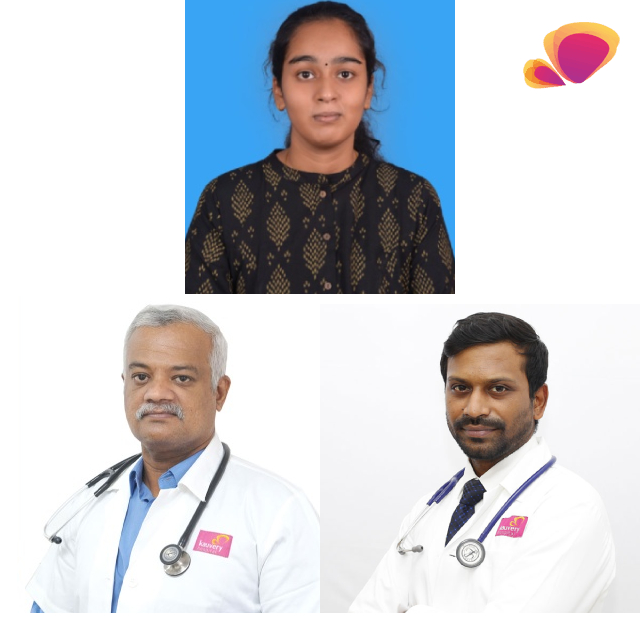Message from Team IMA Chennai Kauvery Alwarpet Branch

Dear Colleagues,
Wishing everyone a very Happy Independence Day and greetings from IMA Kauvery.
Health care in India is now the best in the world.
IMA and digital platform to update our knowledge is the main stay of our clinical knowledge.
We shall be effective and safe doctors and need publish our clinical work to extend our knowledge.
This month’s edition carries various interesting articles which will reflect the above.
We extend our thanks to all the authors and coauthors.
Yours in IMA service,
Dr S Sivaram Kannan
President

Dear IMA members,
Education is power.
This month’s IMA journal is filled with articles of interest from various branches of Clinical Medicine.
Yours in IMA service,
Dr. Bhuvaneshwari Rajendran
Secretary.

Dear friends
Once again, I am happy to meet you all with the next edition of our journal.
Our postgraduates share interesting cases that we treated last month in our hospital.
It is satisfying to see the scientific work of the high standards are being done in our hospital.
My appreciation to all of them and a big thanks to their consultants.
As usual the branding and editorial teams have done their job perfectly on time.
Happy Independence Day wishes.
With best regards
Dr. R. Balasubramaniyam
Editor

It’s Always More Than Just Low Hemoglobin: A Case of Warm Autoimmune Hemolytic Anemia
Case history
Mrs. X, a 63-year-old female, presented to the emergency department with high-colored urine for five days, yellowish discoloration of the skin and eyes for two days, and shortness of breath for one day. She reported a history of fever two weeks prior, lasting two days without localizing signs, which resolved spontaneously. She denied symptoms of fever, hematuria, dysuria, increased urinary frequency, nausea, vomiting, abdominal pain, visual disturbances, headache, cough, chest pain, palpitations, weight loss, loss of appetite, evening fever, or oral ulcers. She gives history of Menopause by age 47 with no history of abnormal uterine bleeding. She had no previous similar episodes or other comorbidities, apart from a total knee replacement one year ago.

Fluid Dynamics: A Tale of Parapneumonic Effusion
Case history
Presenting complaints :
56 year old male known case of diabetes mellitus and hypertension presented with complaints of fever associated with chills and rigor and cough with yellow colour, sputum, and breathlessness of grade 4.
Examination:
Patient was febrile , tachycardic (pulse rate was 119/min) and saturation was 98% in room air.
Respiratory system examination revealed pleural rub.

HIV and Renal Disease
A 50 years old lady, a diabetic, hypertensive and ischemic heart disease patient, who underwent CABG in 2023 was admitted with complaints of bilateral lower limb swelling, low grade fever, nausea and vomiting since 10 days. She was a case of PLHA since 13 years on regular ART with Tenofovir, lamivudine and dolutegravir regimen. She was found to have elevated creatinine levels in March 2024 (around 1.7mg/dl), but was not evaluated further. She now presented with serum creatinine of around 6mg/dl with non oliguric status. She was initiated on hemodialysis in view of the renal parameters and planned for a renal biopsy.
HIV associated kidney disease encompasses several types of kidney damage related to HIV infection. The most common and severe form is HIV-associated nephropathy (HIVAN), but other kidney-related issues also arise in HIV-positive individuals.

Case Report: Management of severe Scrub typhus with intensive dual therapy
Patient Profile:
42 years old male presented with
- Fever, respiratory distress, and general
- No significant past medical
- Social History: No history of recent travel, exposure to tick bites, or contact with Non-smoker, occasional alcohol use.

Ovarian Fibromatosis: The Black Garland Sign
57-year-old post-menopausal female came to our radiology department, Kauvery hospital, Alwarpet, Chennai with complaints of lower abdominal pain.
No prior imaging is available for comparison. MRI pelvis showed thickened and homogeneously hypointense fibrous cortex with mild delayed peripheral enhancement seen in both ovaries
This article highlights the MRI features to distinguish the ovarian fibromatosis with ovarian fibroma.
Introduction:
Ovarian fibromatosis is a rare, benign, non-neoplastic condition characterized by the enlargement of the ovaries

Conscious Sedation with Remifentanil in Subdural Evacuation Surgery
Introduction:
Monitored anaesthesia care is a specific anaesthesia technique for therapeutic and diagnostic procedure done under local anaesthesia along with sedation and analgesia titrated to a level that preserve spontaneous breathing and airway reflex, it has three basic components – a safe conscious sedation, measure to allay patient’s anxiety and effective pain control.
It has less physiological disturbance and more rapid recovery than general anaesthesia. Sedation ranges from minimum to moderate (patient remain asleep but easily arousable) to deep sedation (patient can be aroused only by painful stimuli).


